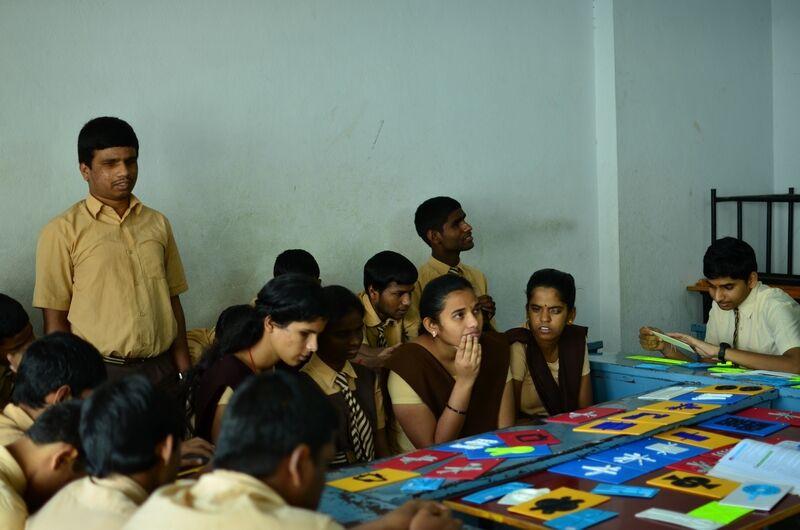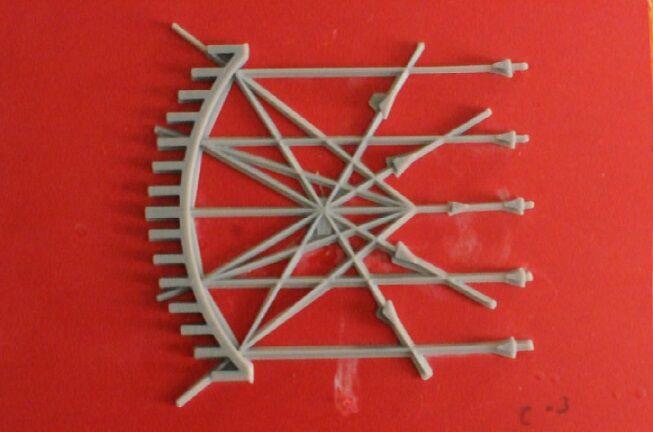 The world of technology and all it encompasses is vast and can often revolve around the rather cold world of industry and manufacturing, made of steel and metal. And while 3D printing is well encapsulated inside that world today and of much use in transforming industrial processes, its unlimited potential allows us to reach for the stars in ways never before imagined.
The world of technology and all it encompasses is vast and can often revolve around the rather cold world of industry and manufacturing, made of steel and metal. And while 3D printing is well encapsulated inside that world today and of much use in transforming industrial processes, its unlimited potential allows us to reach for the stars in ways never before imagined.
The ability to innovate, create, and share has imbued this part of the technological world with a surprising and truly amazing amount of warmth as we see those who are challenged being helped in ways previously not possible. While positively transforming industry and manufacturing is one matter of importance, the ways that 3D printing is able to change lives is another altogether.
 Now, think3D of India is celebrating its one-year anniversary by giving back to their community in the truest sense, as they offer education to the visually impaired by preparing and following through with an initiative that they coordinated with India’s Devnar Foundation for the Blind. With the concept of ‘Making Eyes,’ the program offers students the chance to break away from the standard Braille workbooks and not only learn new information but also learn about what the technology of 3D printing has to offer them, as well as the world–on many levels–and for individuals with many other challenges.
Now, think3D of India is celebrating its one-year anniversary by giving back to their community in the truest sense, as they offer education to the visually impaired by preparing and following through with an initiative that they coordinated with India’s Devnar Foundation for the Blind. With the concept of ‘Making Eyes,’ the program offers students the chance to break away from the standard Braille workbooks and not only learn new information but also learn about what the technology of 3D printing has to offer them, as well as the world–on many levels–and for individuals with many other challenges.
Prudhvi Reddy, a co-founder of think3D, invokes the inspiration of Helen Keller, who said, “The only thing worse than being blind is to have sight but no vision.” With that in mind, he and his team use that inspiration to remember how much more there is in the ‘big picture’ of the world aside from the daily operations of commerce and finance. They have been on a mission to give back–and it’s been successful as they contributed to a comprehensive program for the blind at the Devnar School after he and his partner, Raja Sekhar Upputuri, made a plan for what they were interested in doing. They then reached out to Dr. Saibaba Goud, a leading opthamologist and co-founder of Devnar Foundation for the Blind, which is a residential school for visually challenged children.
“We explained him about 3D printing technology and how it can be used to create 3D visual aids. He became very interested in this whole project. He assigned a faculty member as our point of contact for this project and supported us all through,” says Prudhvi.
Using 3D printed models, the think3D team made a special emphasis on creating illustrations for science all around, as that is what the blind students were having significant challenges in understanding. They 3D printed examples including a metal coil for learning in science, and even a model for demonstrating such complexities as the law of the convergence of light. They also created such models as the anatomy of the human eye, and many more.
“For normal children, we can easily explain by drawing a picture on the board. They can see and visualize it. But blind children can visualize only by touch,” said Prof. R. Parameshwaran, physics faculty at Devnar School. “We do have few visual aids in the laboratory. Those are bulky, non-portable and are prone to damage easily; moreover, creation of such visual aids is an expensive proposition. So, we are commissioning such models for very important concepts like the blood circulation system. If we can get highly portable and durable models at low cost, that will be a huge benefit for these students.”
 In their attempt to continue giving back to their community, the team found a definite need that they could help fill by 3D printing the illustrations from the students’ science textbooks. It was clear that this would offer an easier way both for teachers to instruct and for students to grasp the concepts. It took 45 days for them to complete the project, which was received by everyone with great enthusiasm.
In their attempt to continue giving back to their community, the team found a definite need that they could help fill by 3D printing the illustrations from the students’ science textbooks. It was clear that this would offer an easier way both for teachers to instruct and for students to grasp the concepts. It took 45 days for them to complete the project, which was received by everyone with great enthusiasm.
“This is a light ray hitting the lens and reflecting back,” said one of the high school students upon receiving the light ray 3D model. “I can visualize which ray is coming from the right, which one from the left, which one is parallel and which one is perpendicular. This model helped me visualize it very well.”
The general resulting view at the school is that this is a new and permanent improvement on learning at the school.
“Initially it was a bit difficult for me to explain these blind children how the ray of light passes straight through the lens, but now with these visual aids it has become much easier,” said one teacher at Devnar.
With such success, they decided to work on reproducing images from the kids’ biology textbooks as well. While think3D, founded in 2014, is very involved in bringing the technology of 3D printing to ‘corporate honchos’ and multiple sectors, they have now certainly carved out a niche in the educational arena, and proven they have a substantial grip on what it takes to make an impact in a community like that of the visually impaired.
“3D printing is making the impossible possible, and 3D printed visual aids are a perfect example of how this technology can be deployed for the betterment of society,” says Raja Sekhar Upputuri. “This technology is still in its very early stages of evolution, and we are all excited to be part of this revolution as we continue to explore ways to deploy this technology to solve the problems.”
Have you been involved in using 3D printed models for those who are visually impaired or physically challenged otherwise? Share with us in the think3D Models for Visually Impaired forum thread over at 3DPB.com. Below is a video about the initiative, as well as photos of some of the 3D printed educational models.

3D printed model illustrating “Law of convergence of light”; Arrows demarcating the direction of light.
Subscribe to Our Email Newsletter
Stay up-to-date on all the latest news from the 3D printing industry and receive information and offers from third party vendors.
Print Services
Upload your 3D Models and get them printed quickly and efficiently.
You May Also Like
3D Printing News Briefs, July 2, 2025: Copper Alloys, Defense Manufacturing, & More
We’re starting off with metals in today’s 3D Printing News Briefs, as Farsoon has unveiled a large-scale AM solution for copper alloys, and Meltio used its wire-laser metal solution to...
Etsy Design Rule Change Reduces Selection of 3D Printed Goods
Online marketplace Etsy has implemented a rule change requiring all 3D printed goods on the site to be original designs. The update to the site’s Creativity Standards states, ¨Items produced using...
Siraya Tech Introduces New Elastomer 3D Printing Materials, Including Foaming TPU
California company Siraya Tech, founded in 2019 with a focus on material science, customer focus, and agility, develops high-quality 3D printing materials that meet the needs of creators, hobbyists, and...
3D Printing News Briefs, April 12, 2025: RAPID Roundup
The news from last week’s RAPID+TCT in Detroit just keeps on coming! That’s why today’s 3D Printing News Briefs is another RAPID Roundup of more exciting announcements from the trade...


































